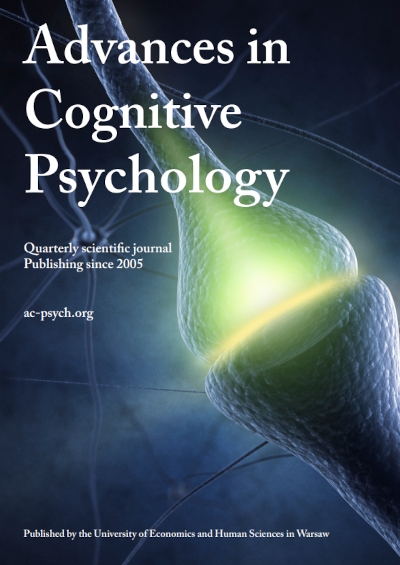Archive of all online content
-
Volume 21 Issue 4
pp. 309-500
(16 November 2025) -
Volume 21 Issue 3
pp. 212-308
(2 September 2025) -
Volume 21 Issue 2
pp. 120-211
(25 May 2025) -
Volume 21 Issue 1
pp. 1-93
(11 March 2025)
-
Volume 20 Issue 4
pp. 237-388
(20 November 2024) -
Volume 20 Issue 3
pp. 158-236
(19 August 2024) -
Volume 20 Issue 2
pp. 80-157
(24 June 2024) -
Volume 20 Issue 1
pp. 1-79
(1 March 2024)
-
Volume 19 Issue 4
pp. 1-105
(27 December 2023) -
Volume 19 Issue 3
pp. 211-333
(25 July 2023) -
Volume 19 Issue 2
pp. 111-200
(30 June 2023) -
Volume 19 Issue 1
pp. 1-110
(31 March 2023)
-
Volume 18 Issue 4
pp. 243-303
(31 December 2022) -
Volume 18 Issue 3
pp. 165-202
(30 September 2022) -
Volume 18 Issue 2
pp. 85-164
(30 June 2022) -
Volume 18 Issue 1
pp. 1-84
(31 March 2022)
-
Volume 17 Issue 4
pp. 250-291
(31 December 2021) -
Volume 17 Issue 3
pp. 193-249
(30 September 2021) -
Volume 17 Issue 2
pp. 99-192
(30 June 2021) -
Volume 17 Issue 1
pp. 1-98
(31 March 2021)
-
Volume 16 Issue 4
pp. 291-369
(31 December 2020) -
Volume 16 Issue 3
pp. 176-290
(30 September 2020) -
Volume 16 Issue 2
pp. 85-175
(30 June 2020) -
Volume 16 Issue 1
pp. 1-84
(31 March 2020)
-
Volume 15 Issue 4
pp. 236-317
(31 December 2019) -
Volume 15 Issue 3
pp. 169-235
(30 September 2019) -
Volume 15 Issue 2
pp. 75-168
(30 June 2019) -
Volume 15 Issue 1
pp. 1-74
(31 March 2019)
-
Volume 14 Issue 4
pp. 150-208
(31 December 2018) -
Volume 14 Issue 3
pp. 62-150
(30 September 2018) -
Volume 14 Issue 2
pp. 38-61
(30 June 2018) -
Volume 14 Issue 1
pp. 1-37
(31 March 2018)
-
Volume 13 Issue 4
pp. 267-322
(31 December 2017) -
Volume 13 Issue 3
pp. 190-266
(30 September 2017) -
Volume 13 Issue 2
pp. 121-189
(30 June 2017) -
Volume 13 Issue 1
pp. 1-120
(31 March 2017)
-
Volume 12 Issue 4 (special issue)
pp. 150-235
(31 December 2016) -
Volume 12 Issue 3
pp. 130-149
(30 September 2016) -
Volume 12 Issue 2
pp. 67-129
(30 June 2016) -
Volume 12 Issue 1
pp. 1-66
(31 March 2016)
-
Volume 11 Issue 4
pp. 118-135
(31 December 2015) -
Volume 11 Issue 3
pp. 64-117
(30 September 2015) -
Volume 11 Issue 2
pp. 31-63
(30 June 2015) -
Volume 11 Issue 1
pp. 1-30
(31 March 2015)
-
Volume 10 Issue 4
pp. 119-155
(31 December 2014) -
Volume 10 Issue 3
pp. 81-118
(30 September 2014) -
Volume 10 Issue 2
pp. 32-80
(30 June 2014) -
Volume 10 Issue 1
pp. 1-31
(27 February 2014)
-
Volume 9 Issue 4
pp. 156-223
(31 December 2013) -
Volume 9 Issue 3
pp. 112-155
(24 October 2013) -
Volume 9 Issue 2
pp. 53-111
(30 June 2013) -
Volume 9 Issue 1
pp. 1-52
(31 March 2013)
-
Volume 8 Issue 4
pp. 267-295
(31 December 2012) -
Volume 8 Issue 3
pp. 210-266
(27 September 2012) -
Volume 8 Issue 2
pp. 70-209
(28 June 2012) -
Volume 8 Issue 1
pp. 1-69
(29 March 2012)
-
Volume 7 Issue 2
pp. 55-156
(31 December 2011) -
Volume 7 Issue 1
pp. 1-54
(31 March 2011)
-
Volume 6 Issue 6
pp. 1-141
(31 December 2010)
-
Volume 5 Issue 5
pp. 1-134
(31 December 2009)
-
Volume 4 Issue 1
pp. 1-14
(31 March 2008)
-
Volume 3 Issue 4
pp. 419-465
(31 December 2007) -
Volume 3 Issue 3
pp. 363-417
(30 September 2007) -
Volume 3 Issue 1
pp. 1-361
(31 March 2007)
-
Volume 2 Issue 4
pp. 239-276
(31 December 2006) -
Volume 2 Issue 2
pp. 99-237
(30 June 2006) -
Volume 2 Issue 1
pp. 1-97
(31 March 2006)
-
Volume 1 Issue 1
pp. 1-16
()
Volume 13 Issue 2 (2017)
Generalized Benford’s Law as a Lie Detector
Nicolas Gauvrit, Jean-Charles Houillon, Jean-Paul Delahaye

Nicolas Gauvrit, Laboratoire Cognition Humaine et Artificielle, Ecole Pratique des Hautes Etudes, Les Patios Saint-Jacques, 4-14 rue Ferrus, 75014 Paris, France.
E-mail: ngauvrit@me.com
The first significant (leftmost nonzero) digit of seemingly random numbers often appears to conform to a logarithmic distribution, with more 1s than 2s, more 2s than 3s, and so forth, a phenomenon known as Benford’s law. When humans try to produce random numbers, they often fail to conform to this distribution. This feature grounds the so-called Benford analysis, aiming at detecting fabricated data. A generalized Benford’s law (GBL), extending the classical Benford’s law, has been defined recently. In two studies, we provide some empirical support for the generalized Benford analysis, broadening the classical Benford analysis. We also conclude that familiarity with the numerical domain involved as well as cognitive effort only have a mild effect on the method’s accuracy and can hardly explain the positive results provided here.
Keywords: generalized Benford’s law, fraud detection, Benford analysisHuman Eye Movements After Viewpoint Shifts in Edited Dynamic Scenes are Under Cognitive Control
Raphael Seywerth, Christian Valuch, Ulrich Ansorge

Raphael Seywerth, Faculty of Psychology, University of Vienna, Liebiggasse 5, A-1010 Wien, Austria.
E-mail: office@seywerth.net
We tested whether viewers have cognitive control over their eye movements after cuts in videos of real-world scenes. In the critical conditions, scene cuts constituted panoramic view shifts: Half of the view following a cut matched the view on the same scene before the cut. We manipulated the viewing task between two groups of participants. The main experimental group judged whether the scene following a cut was a continuation of the scene before the cut. Results showed that following view shifts, fixations were determined by the task from 250 ms until 1.5 s: Participants made more and earlier fixations on scene regions that matched across cuts, compared to nonmatching scene regions. This was evident in comparison to a control group of participants that performed a task that did not require judging scene continuity across cuts, and did not show the preference for matching scene regions. Our results illustrate that viewing intentions can have robust and consistent effects on gaze behavior in dynamic scenes, immediately after cuts.
Keywords: attention, eye tracking, fixations, editing, continuity, movies, dynamic scenesVarieties of Confidence Intervals
Denis Cousineau

Denis Cousineau, École de Psychologie, Université d'Ottawa, 136 Jean-Jacques Lussier, K1N 6N5 Ottawa, Canada.
E-mail: denis.cousineau@uottawa.ca
Error bars are useful to understand data and their interrelations. Here, it is shown that confidence intervals of the mean (CIMs) can be adjusted based on whether the objective is to highlight differences between measures or not and based on the experimental design (within- or between-group designs). Confidence intervals (CIs) can also be adjusted to take into account the sampling mechanisms and the population size (if not infinite). Names are proposed to distinguish the various types of CIs and the assumptions underlying them, and how to assess their validity is explained. The various CIs presented here are easily obtained from a succession of multiplicative adjustments to the basic (unadjusted) CI width. All summary results should present a measure of precision, such as CIs, as this information is complementary to effect sizes.
Keywords: statistics, methods, precision, confidence intervalsWords That Move Us. The Effects of Sentences on Body Sway
John F. Stins, Fernando Marmolejo-Ramos, Femke Hulzinga, Eric Wenker, Rouwen Cañal-Bruland

John Stins, Department of Human Movement Sciences, VU University Amsterdam, Van der Boechorststraat 9, 1081 BT Amsterdam, the Netherlands.
E-mail: j.f.stins@vu.nl
According to the embodied cognition perspective, cognitive systems and perceptuo-motor systems are deeply intertwined and exert a causal effect on each other. A prediction following from this idea is that cognitive activity can result in subtle changes in observable movement. In one experiment, we tested whether reading various sentences resulted in changes in postural sway. Sentences symbolized various human activities involving high, low, or no physical effort. Dutch participants stood upright on a force plate, measuring the body center of pressure, while reading a succession of sentences. High physical effort sentences resulted in more postural sway (greater SD) than low physical effort sentences. This effect only showed up in medio-lateral sway but not anterio-posterior sway. This suggests that sentence comprehension was accompanied by subtle motoric activity, likely mirroring the various activities symbolized in the sentences. We conclude that semantic processing reaches the motor periphery, leading to increased postural activity.
Keywords: embodied cognition, language processing, postural sway, motor controlMy Command, My Act: Observation Inflation in Face-To-Face Interactions
Roland Pfister, Katharina A. Schwarz, Robert Wirth, Isabel Lindner

Roland Pfister, Department of Psychology, Julius Maximilians University of Würzburg, Röntgenring 11, 97070 Würzburg, Germany.
E-mail: roland.pfister@psychologie.uni-wuerzburg.de
When observing another agent performing simple actions, these actions are systematically remembered as one’s own after a brief period of time. Such observation inflation has been documented as a robust phenomenon in studies in which participants passively observed videotaped actions. Whether observation inflation also holds for direct, face-to-face interactions is an open question that we addressed in two experiments. In Experiment 1, participants commanded the experimenter to carry out certain actions, and they indeed reported false memories of self-performance in a later memory test. The effect size of this inflation effect was similar to passive observation as confirmed by Experiment 2. These findings suggest that observation inflation might affect action memory in a broad range of real-world interactions.
Training of Visual-Spatial Working Memory in Preschool Children
Miriam Gade, Christof Zoelch, Katja Seitz-Stein

Miriam Gade, Catholic University of EichstättIngolstadt, Developmental Psychology and Educational Sciences & General Psychology, Ostenstr. 27, D-85072 Eichstätt, Germany.
E-mail: miriam.gade@ku.de
Working memory, the ability to store and manipulate information is of great importance for scholastic achievement in children. In this study, we report four studies in which preschoolers were trained on a visual-spatial working memory span task, namely the Corsi Block Task. Across all four studies, we found significant training effects for the intervention groups compared to active control groups. Confirming recent research, no transfer effects to other working memory tasks were found. Most importantly, our training effects were mainly brought about by children performing below the median in the pretest and those showing median performance, thereby closing the gap to children performing above the median (compensation effect). We consider this finding of great interest to ensure comparable starting conditions when entering school with a relatively short intervention.
Keywords: working memory, preschoolers, training, compensationErratum: Developmental Changes in Mental Rotation: A Dissociation Between Object-Based and Egocentric Transformations
Sandra Kaltner, Petra Jansen

Sandra Kaltner, University of Regensburg, Universitätsstraße 31, 93053 Regensburg, Germany.
E-mail: sandra.kaltner@ur.de
This erratum reports an error in “Developmental changes in mental rotation: A dissociation between object-based and egocentric transformations” by Sandra Kaltner & Petra Jansen (Advances in Cognitive Psychology, 12, 67-78. doi: 10.5709/acp-0187-y). The error addresses the fact, that regarding developmental changes in object-based and egocentric transformations, there is only a difference found in children. The incorrect version found changes only in the adult group, but not within children or older adults.



